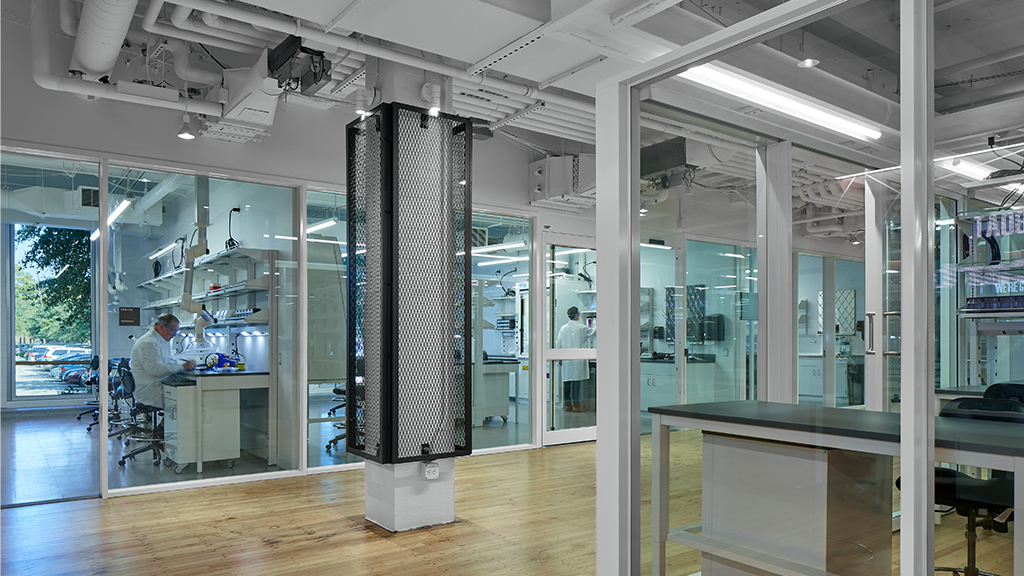Labs and Sciences: Consider This for Adaptive Reuse
June 08, 2022
The lab and life sciences industry is seeing a spike in interest from real estate investors. But in converting office buildings into lab spaces, building owners should take note: this specialized industry comes with its own unique set of real estate considerations, which impact how building measurements are assessed and valued.
If you’re in the business of commercial real estate you’ve no doubt heard the buzz on lab space and an industry working overtime to meet the demands of scientific needs.
Compared to office buildings, lab requirements are considerably different and require detailed and thoughtful planning to be successful. While there is no one-size-fits-all, Gensler’s sciences and office building leaders note, “the key challenge is marrying the unique aspects of an existing building with the unique specifications for science facilities the user organizations' building may house — from basic biology and chemistry to bioinformatics and clinical research.”
Converting a building for a specific tenant is one challenge — converting a building without knowing who the tenant(s) will be presents another set of challenges that must take into account several target tenant types, all requiring test-fit iterations. This is noteworthy because the future lab is no longer standalone. Like so many things today, the future lab is a hybrid environment that can be located anywhere.
Nuances between office buildings and lab sciences buildings, while seemingly small, may have a significant impact on the building measurements — and ultimately, the ratio of rentable to usable space, or R/U factor. Some areas that impact the R/U factor in converting office buildings into labs include:
- Additional service elevators and loading docks
- Ventilation and electrical systems on intermediate floors
- Size and number of hazardous material control zones
Additionally, within the building itself, consideration for how the space will be measured, who will use the information, and any deadlines requiring these measurements should be taken into account by the planning team. This becomes particularly important for multi-tenant scenarios or any type of mixed-use building. Local market conditions will also play a role in selecting a measurement methodology. Particularly “hot” life sciences markets or geography alone may be a factor.
The need for accurate data is further illustrated by a group of New York professionals, who in 2018 launched the NYC Builds Bio symposium to create dialogue around the need for lab and scientific buildings:
“The shortage of supply is further complicated by a lack of knowledge and understanding amongst the New York real estate community about the potential for the market, the specialized infrastructure required by life science companies, and the financial components of development and lease transactions for life science companies.”
Each of the statements (above in bold) will use area measurements in the decision-making process. Leases for these lab sciences space types are significantly different from traditional commercial lease arrangements, particularly in their provisions relating to tenant improvements, hazardous materials, building services, subletting/assignment, and security deposits/letter of credit.
Gensler has developed a matrix outlining four measurement methods typically used for life science buildings and the impacts these approaches have on gross, usable, rentable, and load/loss factors. We’ve paired that with market examples where each measurement method sees use. These include:
- REBNY
- Gross Rentable Area
- “Modified” BOMA or REBNY
- BOMA Office or Industrial Building Standard
Note: When creating a measurement report, BOMA does not recognize “Modified BOMA.” If it doesn’t follow the BOMA Standard, then one can’t use the BOMA name to describe it.
BOMA and REBNY standards are examples of published methods that can be applied consistently. However, labs contain unique types of space that are not considered in those publications. As a result, developers have gravitated toward “modified” building measurement methods and these are typically not adapted consistently between markets. This leads to different measurement practices that are market-dependent. The nuances of lab buildings are likely to be addressed and defined in future iterations of the BOMA measurement standards. As a result, these future publications will have the potential to create more consistency in measurements between real estate markets.
Whether the building is being converted as a spec lab or for a specific tenant, a solid understanding of the building and how different layouts affect the rentable area provides valuable information to support real estate strategies. A building owner or developer must present a competitive package as tenants seek a good value in comparison to other options in the market. Using an objective third party to conduct a building measurement study helps all involved speak the same language, reduce ambiguity, and improve transparency in how rentable figures are calculated.
